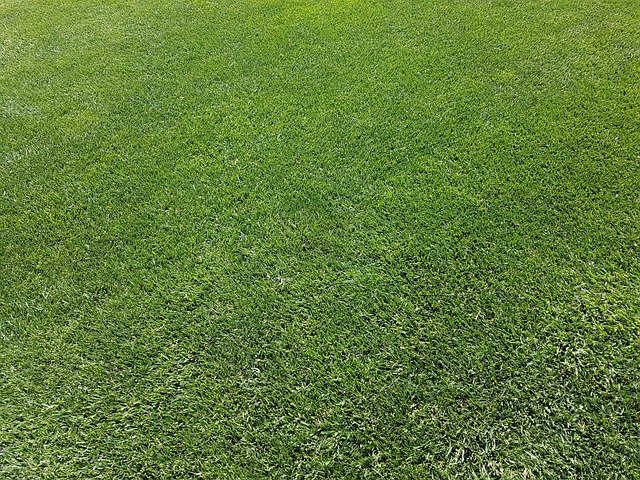Monsoon-Ready Lawn: Preparing Natural Grass for Heavy Rain in India
As the Indian monsoon approaches, homeowners and garden lovers must take proactive steps to ensure their natural grass lawns can endure the heavy rains, high humidity, and waterlogging that often accompany the season. A monsoon-ready lawn is not only lush and green but also resilient against fungal infestations, erosion, and nutrient washout.
🌧️ Understanding Monsoon Challenges for Natural Grass Lawns
India’s monsoon season, from June to September, brings torrential rainfall in short durations. While water is essential for lawn health, excessive moisture leads to:
-
Root rot
-
Fungal diseases like dollar spot and brown patch
-
Soil compaction
-
Nutrient leaching
-
Weed outbreaks
To prevent long-term damage, your lawn care practices must shift from general maintenance to monsoon-specific strategies.

🌱 Choose the Right Type of Natural Grass
Not all grasses are created equal when it comes to handling India’s monsoon. At Balaji Nursery, we recommend:
-
Bermuda Grass (Cynodon dactylon) – Excellent drainage, fast growth, and drought & flood resistance.
-
Doob Grass – A hardy native Indian variety that bounces back quickly after heavy rain.
-
Carpet Grass (Axonopus compressus) – Tolerant to waterlogging, best for shady areas with moisture retention.
Avoid grasses that retain excess water or grow too slowly to recover after the rains.
🧹 Pre-Monsoon Cleanup and Thatch Removal
Thatch is the layer of dead grass, roots, and debris sitting above the soil. If it builds up beyond ½ inch, it prevents water from draining, leading to rot and mold.
Steps for Thatch Removal:
-
Use a garden rake or specialized dethatching tool.
-
Remove all dead leaves, stems, and debris.
-
Compost the removed material or discard it if moldy.
This improves aeration and drainage, allowing the grass to “breathe” during the humid months.
💧 Improve Drainage with Soil Aeration
Poor drainage causes standing water, which suffocates roots and invites mosquitoes. Before monsoon:
-
Perform core aeration using a plug aerator to punch holes 2–3 inches deep.
-
Focus on compacted areas near driveways, garden beds, and play areas.
-
Add organic compost or coarse sand to the holes for better drainage.
This ensures water absorption, reduces surface runoff, and strengthens root zones.
Read More about – 4 Common Signs of Lawn Drainage Issues
🌿 Fertilize with Care: Pre-Monsoon Feeding
Applying the right fertilizer before the rains boosts your lawn’s health and resistance.
What to Use:
-
Slow-release nitrogen fertilizers
-
Phosphorus-rich blends to strengthen roots
-
Organic compost or vermicompost for soil conditioning
Avoid chemical-heavy, fast-release fertilizers—they wash away quickly and can cause nutrient burns.
Timing Tip: Apply fertilizer 10–14 days before the monsoon begins in your region.
🪴 Level Your Lawn to Prevent Waterlogging
Uneven lawns accumulate puddles, which become breeding grounds for pests and fungi. Use a topdressing method to level the ground:
-
Mix sand, compost, and soil.
-
Spread evenly across low areas.
-
Water lightly and repeat if needed before monsoon onset.
Grading your lawn away from foundations and walkways ensures water flows off and not into your home or plant beds.
🧪 Use Anti-Fungal Lawn Treatments Proactively
Monsoons are notorious for spreading fungal infections. Prevent them before they begin.
Natural Solutions:
-
Neem oil sprays
-
Garlic extract fungicide
-
Trichoderma-based bio-fungicides
Chemical Options (Use with Caution):
-
Mancozeb
-
Chlorothalonil
-
Propiconazole
Spray once every 15–20 days during the peak rain months, especially after prolonged cloudy days.
🌾 Control Weeds and Unwanted Grass Growth
With excess rain, weeds multiply rapidly. Their roots compete with your natural grass for nutrients.
Manual Weeding Tips:
-
Use hand weeders post-rain when the soil is soft.
-
Pull weeds from the root to prevent regrowth.
Preventive Mulching:
-
Use grass clippings or coco peat to cover open patches.
-
Reduces sunlight access to weed seeds and retains soil moisture.
🚿 Adjust Your Watering Routine
Most Indian regions receive daily rain during monsoon, so irrigation systems must be turned off or adjusted.
-
Install rain sensors to prevent overwatering.
-
Water only when necessary—if the grass appears dull or the soil feels dry.
-
Prefer early morning watering if required.
Too much water weakens roots and causes runoff of essential nutrients.
✂️ Mow Higher and Less Frequently
Mowing practices must shift during the rainy season to maintain healthy turf density.
Tips for Monsoon Mowing:
-
Raise mower blade height to 3 inches.
-
Mow only when the grass is dry to avoid clumping.
-
Sharpen mower blades regularly to avoid ripping wet grass.
Never mow when the soil is soggy, as it compacts the soil and damages grass roots.
🌤️ Post-Monsoon Recovery Tips
As the rains taper off, your focus should be on lawn recovery and regrowth:
-
Reseed bare patches with fast-germinating grass.
-
Apply mild fertilizers to stimulate root development.
-
Begin light aeration and topdressing to rejuvenate compacted zones.
A post-monsoon lawn care plan ensures your yard stays green and healthy all year.
Conclusion
Creating a monsoon-ready lawn in India is about preparation, resilience, and smart lawn care choices. From choosing flood-tolerant grasses to using preventive anti-fungal treatments, each step helps protect your green space from the challenges of heavy rains.
If you’re looking for expert lawn care services, grass roll installation, or natural turf solutions in Delhi or Chandigarh, Balaji Nursery offers premium sod and support that thrives even in the toughest weather conditions.
Last Updated on 5 months ago by Anjali Mehra Ph.D. in Horticulture (Punjab Agricultural University)
- How to Keep Your Gurgaon Lawn Green During Winters - November 15, 2025
- Fast-Growing Grass Types for Farms and Villas in Punjab - November 13, 2025
- Bermuda Grass vs Selection No.1 Grass — Gurgaon Buyers’ Guide - November 10, 2025
